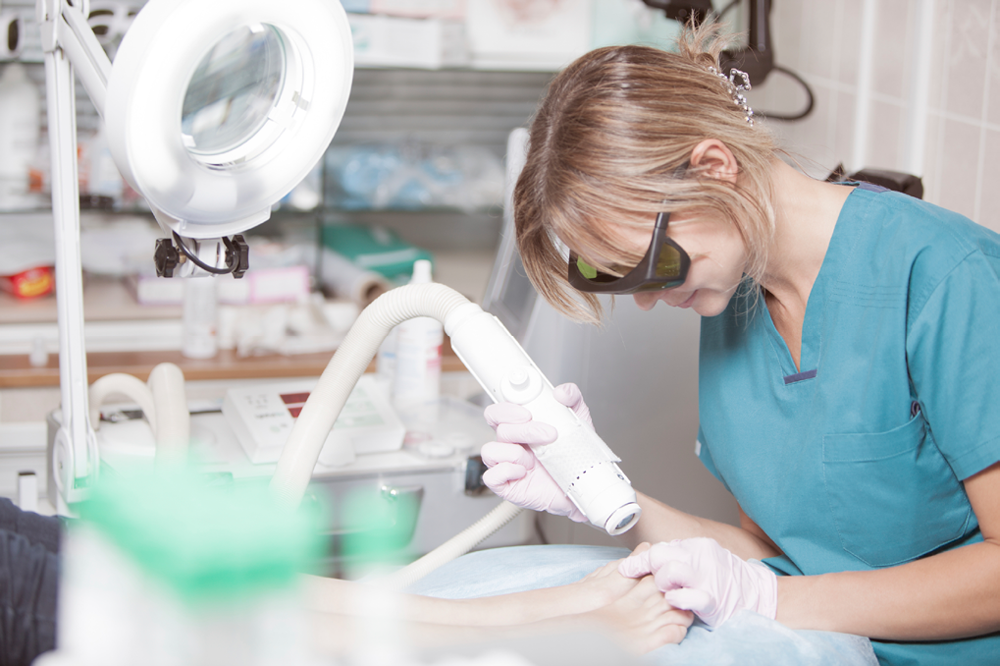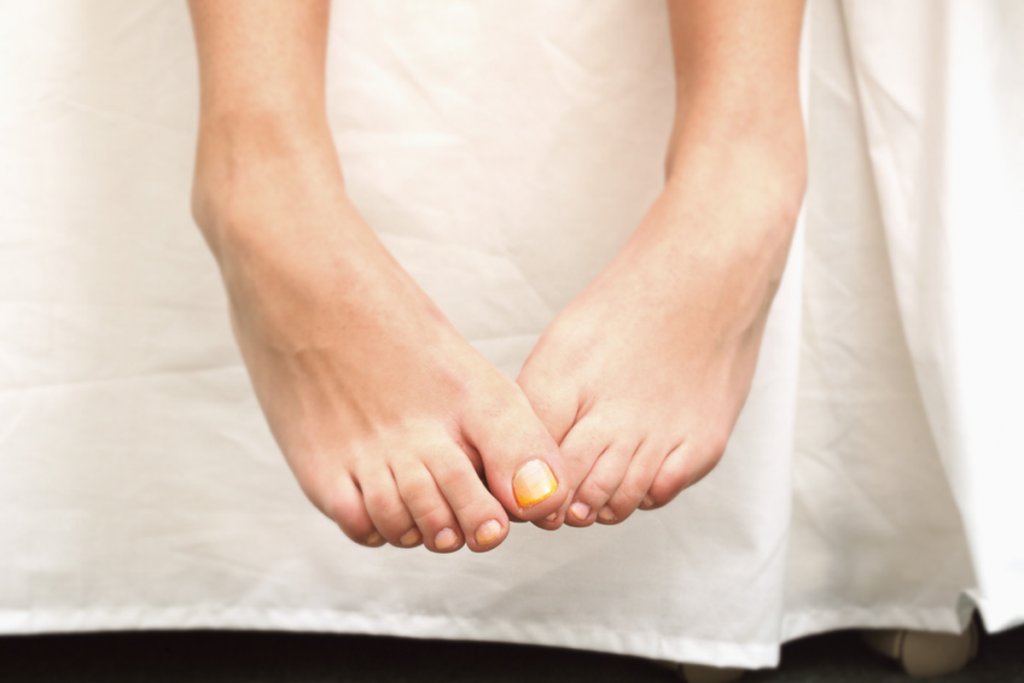If you find yourself fretting over the fact that you have developed nail fungus, you're not alone. Fungal infections of both the fingernails and the toenails are extremely common, the latter being one of the most noted reasons for people deciding to visit a podiatrist. And while visiting a doctor is recommended if you suspect you have developed a nail fungus, there are several DIY remedies that make toenail fungus treatment at home possible, as well.
Toenail fungus symptoms usually begin as a small white, yellow, green or black spot under the nail that eventually causes the nail to become discolored, disfigured, thickened, brittle, and crumbly at the edges. It’s a tenacious condition that can spread to other nails as well as lead to complications, including the loss of your nails if you don't seek treatment. If seeing a doctor isn't possible, then try one of these home remedies for toenail fungus to help cure the infection and prevent it from recurring.
1. Apple Cider Vinegar

Often referred to as nature’s wonder drug, organic, unfiltered apple cider vinegar is a natural anti-bacterial and anti-fungal many patients use to cure toenail fungus infections. It is mildly acid and can help stop a toenail fungal infection from spreading. To use, mix equal parts water and organic, unfiltered apple cider vinegar. Soak the infected nail in this solution for 20 to 30 minutes per day. If done daily, the infection should clear up in a couple of weeks.
2. Tea Tree Oil or Oil of Oregeno
Tea tree oil and oil of oregano are both natural antiseptics and can go a long way in clearing up a condition of nail fungus. Mix a few drops of either oil with a teaspoon of coconut oil. Use a cotton ball or pad to apply the mixture to the affected area. To further speed up the healing process, wait 10 minutes after applying the tea tree oil or oil of oregano mixture and gently scrub the nail with a clean toothbrush. This helps the oil get into each small crack and crevice of the nail and its surrounding area, which can speed up the treatment process. When done daily, you should see an improvement in your nail infection within a few weeks.
3. Listerine and White Vinegar
Listerine is a mouthwash that acts as a powerful antiseptic against bacteria and fungi, and it can help toenail infections, as well. To use, mix equal parts Listerine and white vinegar. Soak the affected foot in this solution for 20 to 30 minutes per day. If done daily, your nail infection should clear up in a couple of weeks.
4. Lemon Juice
This acidic fruit has natural antifungal properties and can help a toenail fungal infection from spreading. To use, apply fresh lemon juice to the infected toenail once per day for several weeks. Wait 30 minutes and then rinse the lemon juice from the foot so as not to experience skin discomfort. Be sure to completely dry the foot afterward, as fungi thrive in moist environments.
5. Garlic
Garlic is a popular home remedy for toenail fungus infections, because two compounds found in garlic — allicin and ajoene — have extremely strong antifungal properties. To use, mix equal parts garlic oil with white vinegar. Apply the mixture to the affected area and cover with a bandage. Repeat daily until the infection clears, which should take a few weeks.
*Note: It is recommended to also eat one or two cloves of raw or cooked garlic per day, as doing so further combats fungal infections and can keep them from recurring.
6. Coconut Oil
The medium chain fatty acids found in organic extra virgin coconut oil destroy the outer membranes of fungal cells, essentially killing them from the outside in. To use this treatment for toenail fungus, apply a thin layer of organic, extra virgin coconut oil to the affected area 2 to 3 times per day until the condition clears, which should be a couple of weeks.
When DIY Nail Fungus Treatment Fails
Treatment of nail fungus can be difficult, as the infection is often embedded in the nail and difficult to reach. If you do not see any improvement with home remedies in a couple of weeks, it is strongly advised that you seek professional medical help. Untreated cases of toenail fungus can lead to other infections as well as loss of the infected nails, especially if you have a weakened immune system or diabetes. People with diabetes who believe they have a nail fungal infection should seek immediate help from a health care provider, as the infection could lead to serious complications.

Another rare complication that could arise from untreated fungal invasions is osteomyelitis, which is an infection of the bone.
How to Prevent Toenail Fungus From Recurring
Whether you’re hoping to prevent reinfection or from developing toenail fungus altogether, one of the most important things you can do is keep your feet clean, dry and properly moisture balanced. Wear comfortable, breathable shoes, and always wear flip flops or shower shoes in public locker rooms, gyms and swimming pool areas to avoid fungus infection. Be sure to keep your toenails clipped straight across (using clean nail clippers, of course), and inspect your toenails every couple of weeks so you’re quick to notice any unusual changes.
*Editor’s Note: While it may be tempting to try and hide nail fungus with nail polish, it is strongly advised that you avoid the temptation. Painting the nail traps the fungus underneath the polish and could lead to the loss of the toenail altogether.
![]()


